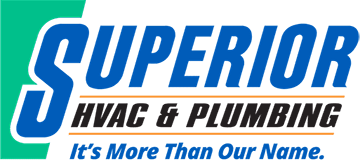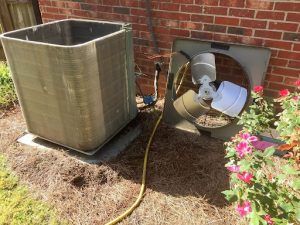As homeowners, we probably don’t give our HVAC systems enough credit. Not only do they ensure our homes stay warm and cool enough as the seasons pass, but they also help to keep the circulated air clean and keep humidity out of the house. They’re pretty complex, and it can be overwhelming to try and understand all of the components and how they work. Superior HVAC & Plumbing is here to help! Explore this guide to HVAC basics to get a better understanding of how your HVAC system keeps your house comfortable.
HVAC Basics: What Exactly Is In Your HVAC System?
Before you can understand how your HVAC system gets the job done, you need a rudimentary understanding of its components. Here’s a guide to HVAC basics when it comes to all the parts that make up the system.
Thermostat: Think of this HVAC component as the brain of your system. The thermostat is what gives you control over the climate inside your home, allowing you to set your temperature and set up schedules for cooling and heating.
Ductwork: The ductwork delivers cooled or heated air to the various rooms in your home.
Air Handler: Also known as the blower, this component of your HVAC system pushes the cooled or heated air through the ductwork and into your home.
Vents: The vents allow the cooled or heated air to escape the ductwork and enter the rooms in your home.
Furnace: Your furnace is responsible for heating the air in your home when those frigid temperatures outside set in. Your furnace is activated by your thermostat and will then use electricity, natural gas, or propane to heat a set of coils.
Heat Exchanger: Your heat exchanger is located inside of your furnace. Its main job is to absorb heat from those coils we just mentioned and warm the air to distribute it throughout the house.
Evaporator Coil: This part of your HVAC system is also inside your furnace, but its job is actually to work with the air conditioner to cool the air being pushed through your home. It holds chilled refrigerant, which is the liquid used to remove heat from the air (and subsequently cool your home).
Condensing Unit: The condensing unit is actually outside of your home. It holds refrigerant gas. As refrigerant cycles through your HVAC system and removes heat from the air, it’s then pushed to the condensing unit. There it’s cooled and transformed back into a liquid.
Refrigerant Lines: These tubes carry the aforementioned refrigerant to the condensing unit to be cooled, and then back to the evaporator coil.
How Does Your HVAC System Work as a Whole?
Now that you know all the different HVAC basics that make up your home’s system, let’s discuss how they work together to keep your home comfortable throughout the year.
To Cool Your Home
When your HVAC system is activated to cool your home, the thermostat will trigger the air conditioning to kick on. The evaporator coil will pull heat out of the air in your home, and the cooled air is then pushed into the ductwork by the blower and circulated throughout your house. The heat that was absorbed by the evaporator coil is then pushed into your condenser unit.
To Warm Your Home
Again, things kick off when the thermostat says go. The thermostat will trigger your furnace to turn on. The heat exchange will warm the air, and the heated air is then pushed by the blower into the ductwork to warm your home.
To Ventilate Your Home
Your HVAC system plays an important part in keeping your home’s air not only cooled and heated, but also clean. During the ventilation process, filters within the HVAC system remove dust, allergens, bacteria, and other contaminants from the air. This helps to improve air quality throughout your home.
Get All of Your HVAC System Questions Answered
Need expert help when it comes to your HVAC system? Whether you need maintenance or repairs, Superior HVAC & Plumbing is here to help. Contact us today!

